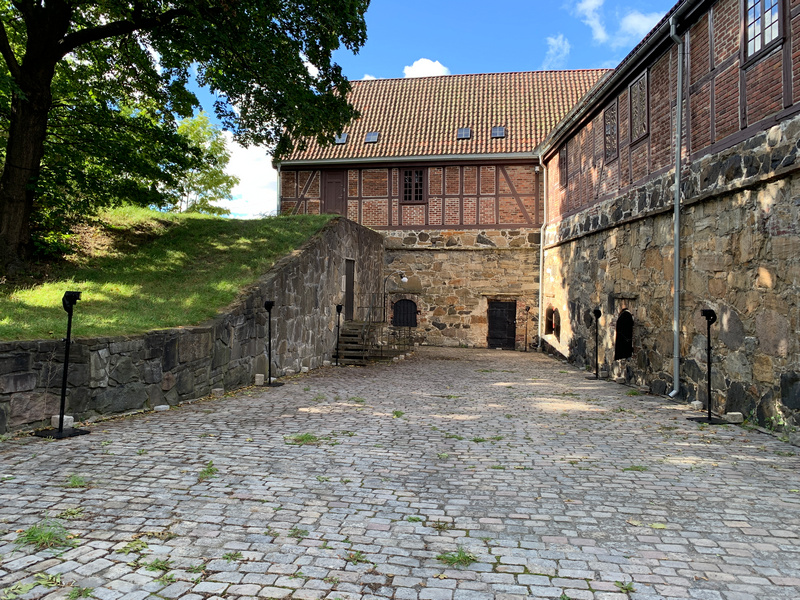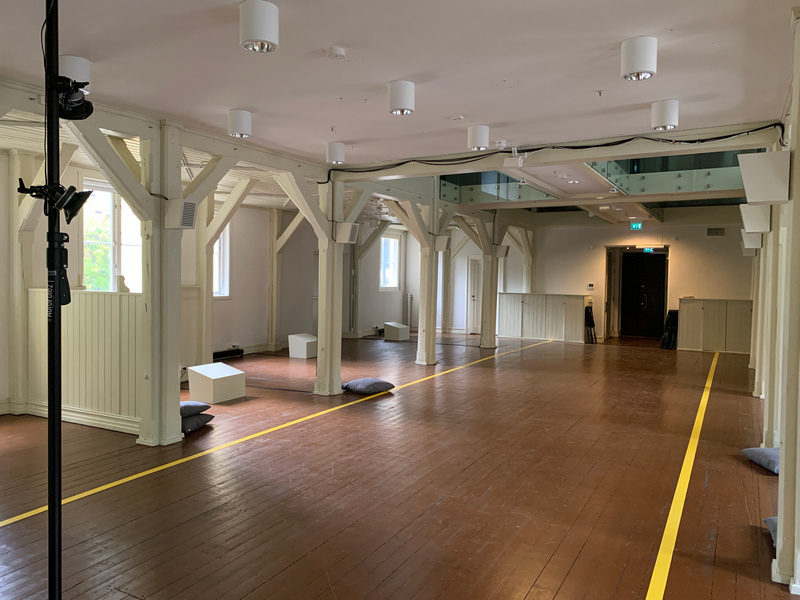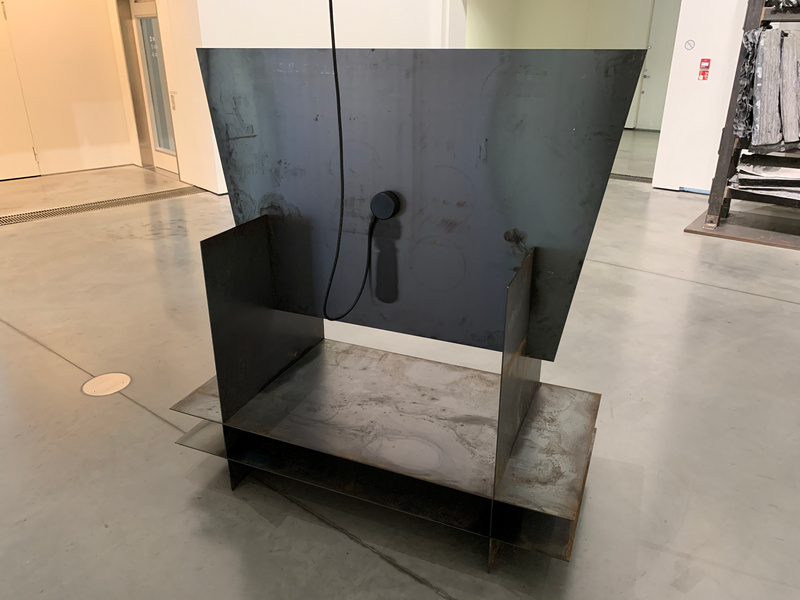
Within the context of new music festivals, it can be rather too easy to assume that installations are a kind of secondary activity, even an optional extra, something to check out if you’ve got some spare time between the really important stuff, i.e. the actual concerts. This misconception is perhaps reinforced by their ostensibly passive nature: carrying on regardless, hour after hour, day after day, indifferent to whether or not an audience is actually present. That assumption was emphatically challenged during this year’s Ultima festival in Oslo, thanks to a trio of works by Natasha Barrett, Maia Urstad and Ignas Krunglevicius.
Situated in Oslo’s impressive Akershus Fortress, Natasha Barrett‘s Presence / Nærvær harnessed sounds from the surrounding environment, recorded previously, as a way to stimulate, enhance and transform the sounds in that same environment, being heard now. Emanating from eight speakers plus an additional speaker that purported to project sound off the walls of the building, Barrett’s soundscape was kept deliberately subtle. The low volume implied that it was less something to be listened to than listened through, in the process filtering, expanding and conditioning the real-time listening experience.

There were times when it was abundantly clear that i was within an artificial soundworld, most obviously when Barrett allowed obviously electronic sounds to burble and chirp their way to the surface. But for the most part, PRESENCE | NÆRVÆR melted away into a kind of ‘in between’ state, where it was no longer possible to be sure of which sounds were happening now in the city, and which were coming from the loudspeakers. Barrett speaks of this as a “hyper-enhanced version of ‘the real'”, and this is precisely how the effect came across, of being in the midst of a subtly expanded version of reality, where being sure about the nature of that expansion, and where the real ended and the unreal (or hyperreal) began, was often impossible.
A couple of kilometres away, FERD (Journey) by Norwegian sound artist Maia Urstad was playing out in Atelier Nord. The work draws on sounds connected with train travel, all of which managed to transform the still, rather austere interior of the space into an illusion of continuous motion. At the core of the piece is a layer of sound that, at different points, takes the form of a drone, a hum, or a band of noise. Sometimes this felt highly active, a side effect of fast travel, though at other points it turned passive, the sound becoming seemingly static; usually it was somewhere between these poles, creating engaging fluctuations of perception. This core also served to replicate something of the way trains disconnect us from the outside world, the sounds we hear being filtered and attenuated by the confines of the carriage.

Into this contradictory world Urstad projected the ubiquitous bing bongs that herald all train announcements, here becoming fragments of melody, unique within this soundworld. The sporadic voices, in a variety of languages, came and went like words on the wind; some of them – “make yourself comfortable” – could almost have been instructions for us experiencing the piece. The effect was enhanced by such mundane things as visitors entering and leaving Atelier Nord, akin to passengers getting on and off the train, and even going to the toilet, with the sound of the announcements coming through the door to ensure we were all kept suitably informed.
Next to the harbour, in the spacious upstairs of the Astrup Fearnley Museum of Modern Art, was POSSESSOR by Lithuanian sound artist Ignas Krunglevičius. This comprised a number of large metallic constructions, one of which seemed to serve as a “source” for four separate satellites, connected to them via long cables strung throughout the space. Each of the satellites had exciters attached to them, causing their panels to vibrate and resonate. The overall palette consisted of a mixture of tangible sounds – a voice occasionally calling out numbers from the “source”, and various impacts and tappings from the satellites – and intangible, such as never-ending downward spirals redolent of Shepard tones, faint floating pitches and soft atmospheres.

Considering the title of the work, i confess i turned up with expectations of intensity and overload, so it was an intriguing surprise to find POSSESSOR to be such a gentle and subtle experience. A central question posed by the work resides in the nature of the relationship between the “source” and the satellites, and whether the noise and numbers being issued from the former in any way trigger or instigate the satellites’ behaviour. Furthermore, there’s ambiguity in the relationship between the satellites too, in terms of whether they’re independent from one another or are closely-related siblings (even non-identical twins). The long cable connecting them all together was evidently no red herring, yet what was really passing along it was impossible to be sure about.

Over time – and POSSESSOR was a work that required more time and patience (and moving around the space) than the other installations, in order to become accustomed to its behaviour and ‘language’ – certain things started to become clear(er). The satellites, though often exploring parallel actions, periodically came together to form what was in essence a four-part chorus, singing abstract ‘chords’ made up of pitches and noise. Perhaps more significantly, the work’s title insinuated itself into my listening, highlighting how little effort was needed to ‘possess’ these large metal constructions through touch alone, under the influence of sound and vibration, rather than anything more demonstrative. Perhaps this says something unsettling about the ease and apparent gentleness with which one can take dominion of another, without obvious signs of aggression or violence. Yet at the same time, does POSSESSOR have to imply a negative connotation? When the four satellites sang as one, it was easy to hear in their strange song an altogether different kind of possession, bespeaking ecstasy and rapture.
Natasha Barrett’s PRESENCE | NÆRVÆR is open each day until the end of Ultima on 24 September, Maia Urstad’s FERD is available at Atelier Nord until 30 September, and POSSESSOR continues until 9 October.

[…] / Nærvær was an installation in Oslo’s Akershus Fortress that i explored as part of Ultima 2022. Then, the most arresting aspect of the piece was its melding of previously captured sounds from […]